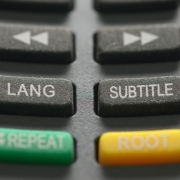Why Closed Captions help with your SEO
Obviously, the main function of subtitles and closed captions is for deaf and hard of hearing people to follow what’s happening on screen.
There are, however, many other advantages to having captions on a video.
One of the most surprising of these is a boost in SEO, helping your video, website, and business to all become more visible to the wider world. Read more →





